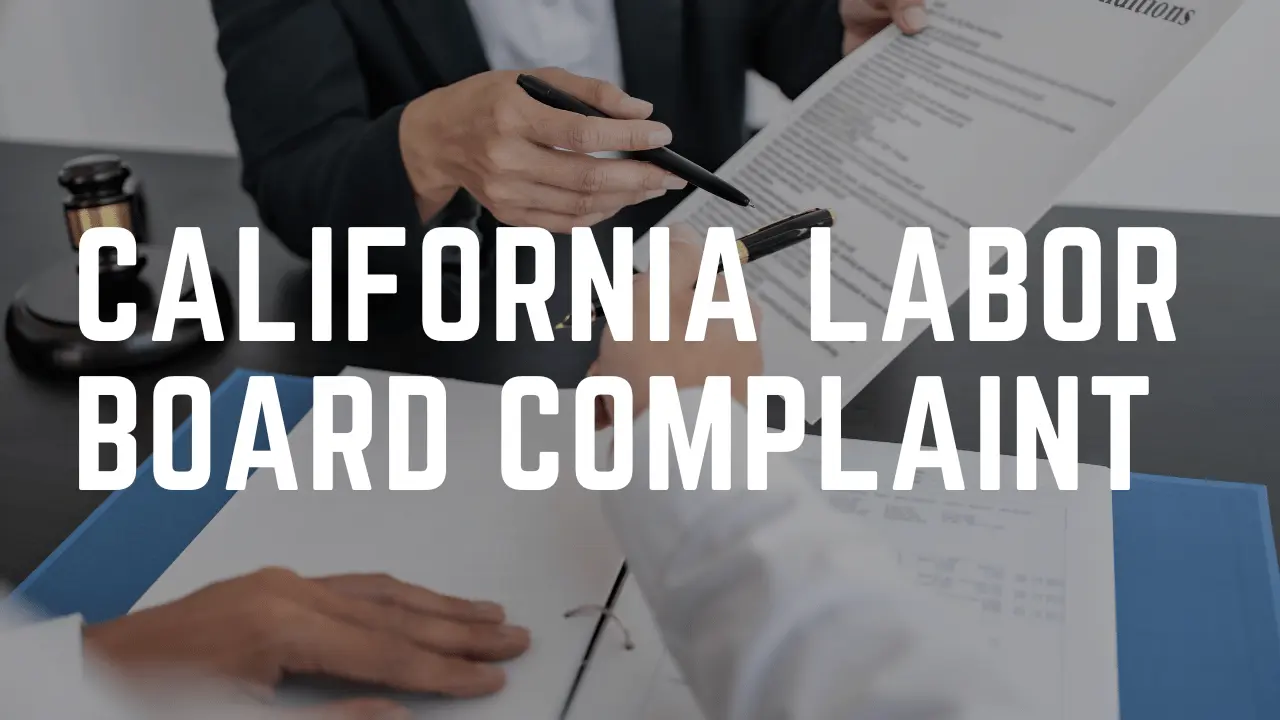Table of Contents
ToggleWith the aim to equip individuals and organizations with the necessary tools to unmask such biases, this guide intends to delve into the legal landscape, provide clarity on key components of discrimination cases, and outline the process of filing a discrimination lawsuit.
Yet, it is important to note that understanding and addressing workplace bias is not a linear journey, but a continuous process, which necessitates further exploration beyond this guide.
Understanding Workplace Discrimination
Workplace discrimination, unfortunately, is a pervasive issue that manifests when an employer takes adverse employment action against an individual belonging to a protected class, as defined by various anti-discrimination laws. These actions can include termination, demotion, refusal to promote, denial of benefits, or even harassment.
The protected classes encompass age, race, gender, gender identity, sex, sexual orientation, national origin, religion, physical or mental disability, and marital status. Various laws, such as the Age Discrimination in Employment Act (ADEA) or Title VII, provide protection against specific types of discrimination.
In addition to federal laws, some states, such as California, have their own comprehensive anti-discrimination laws like the Fair Employment and Housing Act (FEHA). These laws work in tandem to protect workers from discriminatory practices.
Protected Classes and Discrimination Laws
Drawing from the broad understanding of workplace discrimination, it becomes crucial to delve deeper into the concept of protected classes and the specific laws designed to safeguard their rights in the employment context.
Protected classes encompass various characteristics including age, race, gender, sexual orientation, religion, and disability among others. Discrimination laws, such as the Age Discrimination in Employment Act (ADEA) or Title VII of the Civil Rights Act, are pivotal in combating workplace bias, providing legal remedies for unjust treatment based on these protected classes.
However, proving discrimination often involves intricate legal processes and relies heavily on direct or circumstantial evidence. Hence, understanding these laws and their application is fundamental for both employees and employers to ensure equitable workplaces.
California’s FEHA and Its Role
In the landscape of anti-discrimination laws, the Fair Employment and Housing Act (FEHA) stands as a robust legislation in California, playing a key role in protecting workers from discriminatory practices. This state law extends beyond federal mandates, providing broader safeguards against workplace bias.
FEHA covers businesses with five or more employees, which is more inclusive than federal laws requiring a minimum of 15 employees. It also acknowledges a wider scope of protected classes, including military or veteran status.
FEHA imposes stricter penalties on employers found guilty of discrimination, enhancing its deterrent effect.
Clearly, FEHA’s comprehensive and stringent provisions significantly contribute to fighting workplace discrimination, ensuring a fairer, more inclusive work environment for all Californians.
Proving Discrimination: An Overview
Navigating the complexities of proving discrimination in the workplace can be a challenging endeavor, as it necessitates a keen understanding of the legal requirements and the types of evidence needed to substantiate claims.
Direct evidence, such as explicit statements indicating bias, provide the most compelling proof, yet they are rare. More commonly, victims rely on circumstantial evidence, which indirectly indicates discriminatory intent through patterns of behavior or disparate treatment.
Demonstrating discrimination also requires establishing a prima facie case, showing membership in a protected class, qualification for the job, adverse action taken and evidence of discriminatory intent.
If the employer provides a non-discriminatory reason for the action, the burden shifts back to the employee to show this reason is a pretext.
The Power of Direct Evidence
While less common in workplace discrimination cases, direct evidence holds a potent ability to substantiate claims of bias, providing an explicit and undeniable testament to discriminatory behavior. Direct evidence can come in several forms:
- Explicitly biased statements made by employers or supervisors, such as discriminatory remarks or derogatory comments about a protected class.
- Written documents, like emails or memos, that clearly indicate biased decisions or policies.
- Audio or video recordings demonstrating discriminatory behavior or bias in the workplace.
Despite its rarity, the undeniable nature of direct evidence makes it a powerful tool in proving workplace discrimination. It provides a solid ground for legal actions and can lead to significant changes in the workplace environment, fostering a more inclusive and fair space for all employees.
The Role of Circumstantial Evidence
Often more prevalent in discrimination cases than direct evidence, circumstantial evidence plays a vital role in shedding light on subtle yet insidious forms of workplace bias. It encompasses any information or facts that, while not directly indicating discriminatory behavior, suggest such behavior when considered in totality.
This type of evidence may include patterns of behavior, disproportionate impacts on certain groups, or suspicious timing of adverse employment actions. For instance, an abrupt termination following an employee’s revelation of their protected status could serve as circumstantial evidence of bias.
While challenging to interpret, this evidence is crucial in unveiling covert prejudice, ultimately contributing to a fairer, more inclusive workplace environment. Legal guidance is often essential in effectively leveraging such evidence.
The McDonnell Douglas Burden-Shifting Approach
In the complex landscape of employment law, the McDonnell Douglas burden-shifting approach emerges as a pivotal tool for analyzing circumstantial evidence in discrimination cases. This three-step process enables complainants to demonstrate bias without explicit evidence.
- Initially, the plaintiff must establish a prima facie case of discrimination, showing that they belong to a protected class, were qualified for their position, suffered an adverse employment action, and circumstances suggest discriminatory intent.
- The burden then shifts to the employer to articulate a legitimate, non-discriminatory reason for the action.
- Finally, the onus reverts to the plaintiff to prove that the employer’s proffered reason was merely a pretext for discrimination.
This method aids in unmasking subtle but systemic workplace biases, thereby facilitating justice.
How to Establish a Prima Facie Case
Building upon the understanding of the McDonnell Douglas burden-shifting approach, it is crucial to comprehend the steps necessary to establish a prima facie case in workplace discrimination claims.
This involves proving four key elements: the complainant belongs to a protected class, they were qualified for their position, they suffered an adverse employment action, and the circumstances suggest discriminatory intent.
For example, if a qualified older worker is replaced by a younger, less experienced employee, age discrimination might be inferred.
Establishing a prima facie case shifts the burden of proof to the employer to provide a non-discriminatory rationale for their action.
However, the complainant must then demonstrate this reason as a pretext for unlawful discrimination.
Proving such a case requires diligence, documentation, and often, legal support.
Filing a Discrimination Lawsuit
Navigating the legal labyrinth of filing a discrimination lawsuit requires a comprehensive understanding of the specific laws invoked and the mandatory administrative procedures that precede any court action. It is a complex journey that demands meticulous attention and a certain level of legal expertise.
First, identify the anti-discrimination law that applies to your case. It could be a federal law, like Title VII of the Civil Rights Act, or a state law, such as the Fair Employment and Housing Act in California.
Second, ensure you comply with the administrative procedures required by these laws. This often involves filing a charge with an agency like the Equal Employment Opportunity Commission (EEOC).
Lastly, after exhausting the administrative remedies, you can proceed to file a lawsuit in court.
This process, though challenging, is a crucial step towards seeking justice and addressing workplace bias.
Navigating EEOC Administrative Procedures
Having established the importance of filing a discrimination lawsuit, we now shift our focus to the intricate process of navigating the administrative procedures set forth by the Equal Employment Opportunity Commission (EEOC).
It is essential to recognize that the EEOC’s procedures are not merely a formality, but a crucial step in fighting workplace discrimination. The first step is filing a charge within 180 days of the discriminatory conduct. It’s a meticulous process that requires a comprehensive description of the alleged discrimination.
After filing, the EEOC investigates the claim and, if found valid, attempts to facilitate a resolution. Failure to adhere to these procedures can jeopardize your case. Thus, understanding and correctly navigating the EEOC’s administrative procedures is paramount in ensuring your rights are fully protected.
Conclusion
In conclusion, understanding and addressing workplace discrimination is a multifaceted process. By comprehending the legal definitions, identifying protected classes, and understanding the evidence required, one can effectively challenge bias.
It’s crucial to follow the appropriate administrative procedures before filing a lawsuit. This knowledge equips individuals to strive for a fair, equitable work environment, fostering an atmosphere of respect and diversity.














